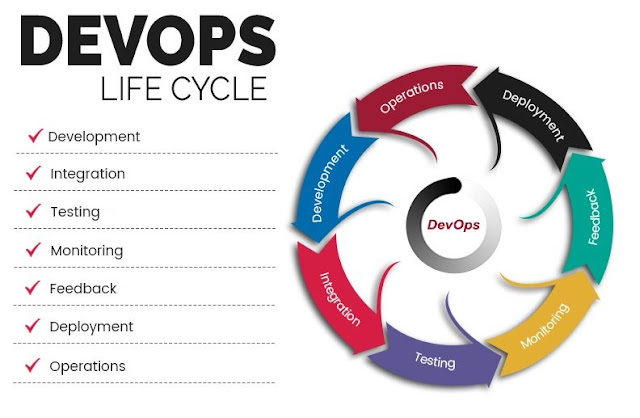Software Release Management: Best Practices for Better Software Delivery
Without software, modern society would not be able to function. High-quality software is being developed and released every day by a large number of companies. Businesses must adopt software delivery best practices to remain competitive and address changing customer needs.
Software release management is a critical aspect of software development. Software development practices from just a few years ago are outdated now. Businesses can streamline their delivery process by integrating DevOps and software delivery best practices.
This article will help you understand the importance of software release management and DevOps as a Service in software delivery. We'll also cover 6 best practices for better software delivery. Read the full article to get some actionable insights.
Understanding Software Release Management#
Imagine you and your team working day and night tirelessly to develop software. Your software development process is complete after months of hard work. The software you have now cannot be released as it is. Here's where software release management comes into play, ensuring that your software reaches your end users in a flawless state.
Now consider release management as a building with three pillars holding it in place. Version control and branching, being the first pillar, are crucial to release management. Version control allows keeping track of changes where branching enables parallel development without creating complexities in the code.
The second pillar of this building consists of continuous integration and continuous delivery (CI/CD) pipeline. CI/CD ensures your code reaches from development to production with automated testing in between to catch any errors at an early stage.
In software release management, testing and quality assurance are the final pillars. Release management ensures testing becomes an integral part of the software development process rather than an accessory.
Release management plays a vital role in the software delivery process. You can deliver high-quality software efficiently by integrating software release management practices into your development process.
DevOps as a Service: A Catalyst for Software Delivery!#
DevOps as a service (DaaS) is a key to better software delivery. So what is DevOps as a service (DaaS)? And how is it different from traditional DevOps? Traditional DevOps practices place the burden of creating DevOps tools and environment on the organization. In DaaS, you get dedicated DevOps tools, processes, and environments.
DaaS is the combination of cloud and DevOps infrastructure. It's like having a team of invisible people dedicated to handling your software development and deployment around the clock. DaaS ensures the flow of information between development and operation teams.
DevOps as a Service allows organizations to automate repetitive tasks and focus resources on more critical and complex tasks. DaaS ensures organizations streamline their software delivery process and release updates and bug fixes more frequently according to changing customer needs.
DevOps as a Service acts as a catalyst for software delivery and ensures efficient and high-quality software release with the help of automation and collaboration.
6 Best Practices for Effective Software Delivery:#
Implementing version control and branching strategies#
Version control and branching are crucial for effective software delivery. Any code changes affect the overall functioning of the software. Version control and branching allow you to identify problems more efficiently in case of failure.
Version control helps keep track of all the changes and updates. So in case of any problems after recent changes, problems can easily be identified and resolved. Branching enables parallel development allowing multiple developers to merge code changes, thus reducing the complexity.
Testing and Quality Assurance:#
Testing and quality assurance are crucial for high-quality software delivery. Testing has become as important in modern software delivery as writing code itself. Testing allows you to make software flawless for the end user.
You can integrate testing at different stages. You can incorporate unit testing for code maintenance and identification of errors at an early stage. Integration testing, for identifying compatibility issues and ensuring collaboration between integrated units. System testing, for ensuring the overall functionality and integration of the application.
Testing is also an important part of the DevOps automation framework. Continuous testing provides rapid feedback on code changes.DevOps automation in testing reduces manual effort and increases the frequency of tests, thus increasing the chances of catching errors.
By incorporating robust testing and quality assurance practices, development teams can catch and resolve defects early in the development process, reducing the cost of fixing issues in later stages.
Building Efficient CI/CD Pipelines:#
Continuous integration and continuous delivery pipeline offer developers an express lane to seamless and rapid software delivery. Imagine it like a highway with no speed limits and a lane only for you.
The first stop on this highway is Continuous Integration. Continuous Integration allows you to integrate code changes simultaneously. These code changes are then automatically tested and integrated into the code base. It ensures your code is clean and always in sync.
With CI code changes are made automatically. Tools like Jenkins and CircleCI make sure your code builds are consistent and reliable. By embracing Continuous Integration you can ensure high quality of code with their automated tests. Moreover, the CI pipeline automatically tests your code for bugs and errors, making it more reliable.
Now next stop on this highway is Continuous Delivery. CD ensures your code is always ready to deploy. Automated deployment ensures infrastructure provisioning, configuration management, and application deployment are all automated. You also use docker for consistent and reliable deployment.
CI/CD best practices make software development a child's play. It enables efficient and high-quality software delivery.
Integrating Release Management in DevOps:#
Release management in DevOps plays a critical role. It ensures software delivery is smooth, reliable, and according to business needs. By integrating release management in DevOps lifecycle, organizations can deliver high-quality software efficiently, meeting user demands and staying competitive in the market.
Traditional release management often involves manual, time-consuming processes prone to human errors and delays.DevOps overcomes these challenges by embracing automation, which reduces the likelihood of errors and speeds up the release cycle.
Integrating release management in DevOps is crucial and requires collaboration from all the teams. It starts at the development stage with developers using version control and branching practices. After development automated build tests are triggered to identify problems at an early stage. In the end, the code is deployed and updates are made available for the end user.
Release management in DevOps revolves around the principles of continuous integration, continuous delivery, and continuous deployment. DevOps automation in deployment pipelines streamlines the process, ensuring consistency across environments.
By integrating release management seamlessly into the DevOps lifecycle and addressing the challenges of traditional release processes, organizations can stay agile, respond to user needs promptly, and achieve software delivery success.
Collaboration and Communication:#
Collaboration and communication are crucial for software development. Just as coordination between the pilot and tower is important for a successful landing collaboration between different teams is also important. Collaboration ensures problems are solved collectively and knowledge is shared across the organization.
Organizations embracing collaboration and communication between employees thrive. Here are the best practices for increasing collaboration and communication in your organization.
Break down silos: Break silos between development and operation teams. Address common issues hindering collaboration and embrace informal communication across all departments.
Cross-Functional Teams: Embrace the concept of cross-functional teams. Take skilled people with diverse skill sets. Cross-functional teams enable faster decision-making and a shared understanding of goals.
Recognition and Feedback: Make sure individual team members get recognized for their hard work. Recognition and appreciation make employees feel more invested in the work. Moreover, an environment of continuous feedback gives each employee opportunity to grow.
Monitoring and Feedback:#
Software development doesn't end at the deployment but it is continuous in the form of monitoring and feedback. Monitoring and feedback are crucial to ensure the functioning of your application in production.
Monitoring allows you to closely analyze the performance of an application. So in case of any problem, it can easily be identified. Apart from monitoring user feedback also give insights into the performance of an application.
Monitoring and feedback are not just afterthoughts; they are the guardians of software excellence beyond deployment. By proactively monitoring application performance, collecting user feedback, and incorporating both into iterative development, teams can fine-tune their software to meet evolving needs.
Introducing Nife: A Global Cloud Management Platform#
Nife is an advanced cloud computing platform that revolutionizes software deployment. Developed by Nife Labs, it empowers enterprises and developers to launch applications rapidly on any infrastructure. With its simplified cloud, 5G, and edge computing capabilities, Nife ensures faster deployment, seamless scaling, and effortless management.
By integrating Nife with DevOps and Release Management practices, businesses can achieve rapid code deployment, continuous integration, and continuous delivery. Its global edge capabilities enable low-latency access across regions, enhancing user experiences.
Nife's advanced monitoring features provide valuable insights into application performance, optimizing efficiency. Embracing Nife optimizes software delivery, fosters innovation, and enables businesses to stay competitive in the digital landscape.
Visit [Nife Labs] today to explore how our platform can transform your business and revolutionize your software delivery.
Conclusion:#
In conclusion, adopting best practices for better software delivery is crucial in today's fast-paced digital landscape. Release management in DevOps, with its principles of continuous integration, continuous delivery, and continuous deployment, emerges as a game-changer in streamlining software releases.
By integrating release management seamlessly into the DevOps lifecycle, organizations can achieve efficient, reliable, and automated deployments.
Embracing DevOps as a Service (DaaS) further enhances scalability and cost-effectiveness, while DevOps automation empowers teams to minimize errors and maximize speed. Collaboration, communication, monitoring, and feedback are the cornerstones of software excellence, ensuring seamless interactions and continuous improvement.
With these principles at the forefront, organizations can deliver high-quality software, meet user expectations, and stay competitive in the market.
















